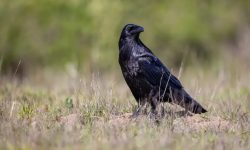Turtles have captured human fascination for centuries, from their calm demeanor to their remarkable longevity. Found in oceans, rivers, ponds, and even dry deserts, these reptiles are among the most adaptable creatures on Earth. But have you ever wondered what turtles actually eat? Their diet is as varied as their habitats, ranging from leafy greens and aquatic plants to insects, fish, and even carrion.
Understanding what turtles eat is essential not just for pet owners but also for anyone interested in wildlife. Their feeding habits play a vital role in maintaining ecosystem balance. Whether you’re caring for a turtle at home or observing them in the wild, knowing their dietary needs reveals how complex and resourceful these reptiles truly are.
In this detailed guide, we’ll explore 15 foods turtles love the most, diving into the preferences of both aquatic and terrestrial species. You’ll learn how their diet changes by species, age, and environment—and why variety is the key to keeping these ancient reptiles healthy and thriving.
Understanding the Turtle Diet

Turtles are omnivores, meaning they eat both plants and animals. However, the ratio between meat and vegetation depends on the species and their stage of life. For example, many young turtles are primarily carnivorous to support rapid growth, while adults gradually become more herbivorous.
Their diet is shaped by where they live. Sea turtles consume marine plants and jellyfish, freshwater turtles feed on fish, aquatic vegetation, and insects, and land turtles or tortoises rely heavily on leafy greens and fruits. Each has evolved unique adaptations—like sharp beaks, strong jaws, and powerful necks—to help them access different food sources.
15 Foods Turtles Love the Most
1. Aquatic Plants
Aquatic plants form the foundation of many freshwater turtles’ diets. Species such as water lettuce, duckweed, and water hyacinth provide vitamins, minerals, and fiber. These plants are soft, easy to chew, and naturally abundant in ponds and lakes.
For pet turtles, offering fresh aquatic greens can simulate their natural foraging behavior, promoting healthy digestion and hydration. Overfeeding, however, can cloud tank water, so moderation is key.
2. Leafy Greens
Leafy greens are a staple for most turtle species, particularly box turtles and tortoises. Kale, collard greens, mustard greens, and dandelion leaves are rich in calcium and essential nutrients.
Turtles benefit from a mix of greens rather than a single type. These help strengthen shells and maintain muscle tone. Avoid spinach and iceberg lettuce, as they contain oxalates or lack sufficient nutrition.
3. Fruits
Turtles love fruits—especially strawberries, bananas, apples, and melons. These sweet treats provide natural sugars and vitamins but should be offered occasionally due to their high sugar content.
In the wild, turtles eat fallen fruits from trees near rivers or forests. For captive turtles, small fruit portions make a perfect supplement, enriching their diet while stimulating appetite and curiosity.
4. Insects
Insects are a protein powerhouse for turtles, particularly juveniles. Crickets, mealworms, and earthworms are common favorites. Turtles catch these in their natural habitat or can be provided live or dried versions in captivity.
Insects are easy to digest and packed with nutrients that support growth and shell development. However, overfeeding them to adult turtles can lead to excessive protein intake, which may cause shell deformities.
5. Fish
Many aquatic turtles, like red-eared sliders and painted turtles, feed on small fish such as guppies, minnows, and goldfish. Fish are rich in protein and omega-3 fatty acids that contribute to shell and skin health.
In the wild, turtles catch live fish by ambushing them or scavenging dead ones. In captivity, offering small live or thawed fish occasionally adds excitement and physical exercise to their feeding routine.
6. Crustaceans
Turtles living in coastal or river environments enjoy crustaceans like crayfish, shrimp, and small crabs. These creatures are nutrient-dense, offering calcium and protein essential for shell maintenance.
The hard exoskeletons of crustaceans help turtles exercise their jaw muscles, while the meat provides a natural source of energy. In moderation, they’re an excellent dietary addition for omnivorous and aquatic turtles alike.
7. Worms
Earthworms and red wigglers are classic turtle favorites. Found in moist soil or compost, worms are high in protein and easy to digest. They also encourage natural hunting behavior when offered live.
Worms are ideal for young turtles or species that rely more on animal protein. However, ensure they’re collected from pesticide-free areas to avoid harmful toxins.
8. Snails and Slugs
Turtles naturally consume snails and slugs found in gardens or ponds. Their soft bodies are rich in calcium and protein, contributing to shell health.
For pet turtles, store-bought or home-bred snails are safer options. Avoid wild snails, as they may carry parasites. The occasional snail treat helps replicate a wild diet and encourages active foraging.
9. Berries
Berries like blueberries, raspberries, and blackberries are turtle delicacies. They’re packed with antioxidants, vitamins, and hydration. Land turtles, in particular, enjoy foraging for berries among leaf litter or forest floors.
Because of their strong color and scent, berries can stimulate feeding responses in picky eaters. Offer them once or twice a week for variety and added nutrition.
10. Vegetables
Vegetables like carrots, squash, bell peppers, and pumpkin are important for herbivorous and omnivorous turtles. They provide fiber, beta-carotene, and hydration.
Chopped raw or lightly steamed vegetables are easier for turtles to consume. Including a mix of colors ensures they get a balance of nutrients that promote shell brightness and immune strength.
11. Mollusks
Some turtles feed on mollusks such as clams or mussels. These are common in aquatic habitats and are rich in protein and calcium. Sea turtles, for instance, often crush shells with powerful jaws to reach the soft flesh inside.
For captive turtles, small, cooked pieces of shellfish can be offered occasionally, though not as a daily food source due to their high sodium levels.
12. Algae
Algae is a natural part of the turtle diet, especially for aquatic species. They graze on algae-covered rocks or tank surfaces, consuming it as part of their daily routine.
Algae provides trace minerals and dietary fiber. While it’s a normal food source, excessive algae growth in tanks should still be managed to maintain water quality.
13. Pellets
For captive turtles, commercial turtle pellets provide a balanced diet formulated with vitamins, minerals, and protein. They are convenient and ensure turtles receive consistent nutrition.
However, pellets should not replace fresh foods entirely. Combining pellets with vegetables, insects, and occasional fruits replicates the diverse diet turtles would have in the wild.
14. Flowers
Many land turtles and tortoises love edible flowers such as hibiscus, roses, and nasturtiums. These colorful blooms provide natural antioxidants and hydration.
Flowers encourage natural grazing behavior, adding both beauty and nutrition to their meals. Avoid any flowers treated with pesticides or chemicals.
15. Carrion
Though not often associated with turtles, carrion—dead animal matter—forms part of some species’ diets. Snapping turtles and softshell turtles, for example, scavenge fish carcasses or other decaying materials in rivers.
This feeding habit keeps waterways cleaner by recycling nutrients back into the ecosystem. It also demonstrates turtles’ opportunistic nature, ensuring they rarely go hungry.
How Turtle Diets Change Over Time
A turtle’s diet evolves as it ages. Young turtles need more protein to support growth, so they focus on insects, worms, and fish. As they mature, their metabolism slows, and they shift toward plant-based foods like leafy greens and fruits.
Environmental factors also influence what they eat. In warm months, food is plentiful, allowing for variety. During colder seasons, wild turtles may rely more on stored fat or slow digestion to survive limited food availability.
Differences Between Sea, Freshwater, and Land Turtles
Sea Turtles: Primarily herbivores or omnivores depending on the species. Green sea turtles graze on seagrass and algae, while loggerhead turtles eat jellyfish, crabs, and mollusks.
Freshwater Turtles: Omnivorous by nature, feeding on aquatic plants, fish, insects, and amphibians. Red-eared sliders and painted turtles are good examples of this category.
Land Turtles (Tortoises): Mostly herbivores that eat grasses, leaves, fruits, and flowers. Their slow metabolism suits a plant-based diet rich in fiber and minerals.
The Importance of a Balanced Diet
A turtle’s diet must balance calcium, phosphorus, and protein to maintain strong shells and healthy organs. Too much protein can lead to shell deformities, while calcium deficiency causes soft shells and weak bones.
In captivity, variety is vital. Combine commercial pellets with natural foods like greens, insects, and occasional fruits to mimic the diverse menu turtles enjoy in the wild. Regular sunlight or UVB lighting ensures they metabolize calcium properly.
FAQs About Turtle Diets
What do turtles eat in the wild?
In the wild, turtles eat whatever they can find—plants, insects, fish, algae, and even carrion. Their diet changes with seasons and habitat conditions.
Can turtles eat human food?
While they might nibble on fruits or vegetables we eat, turtles should not be fed processed or seasoned human food. Salt, sugar, and additives can harm their digestive system.
How often should I feed my turtle?
Juvenile turtles need daily feedings to support growth, while adults can be fed every other day. Always remove uneaten food to keep the habitat clean.
Do turtles drink water?
Yes. Even though aquatic turtles live in water, they still drink it. Land turtles require shallow dishes of clean water for drinking and soaking.
Can turtles eat lettuce?
Only nutrient-rich varieties like romaine or green leaf lettuce are beneficial. Avoid iceberg lettuce, which offers little nutritional value.
What foods should turtles avoid?
Avoid feeding turtles dairy, processed meat, onions, avocado, or bread. These can cause digestive distress or nutritional imbalance.
Conclusion
Turtles are remarkable survivors with diets as diverse as their environments. From leafy greens and aquatic plants to insects, fish, and even carrion, they consume what nature provides with remarkable efficiency. Their adaptability allows them to thrive in ponds, rivers, oceans, and backyards worldwide.
Understanding what turtles eat helps us appreciate their ecological role—as cleaners, grazers, and silent keepers of balance in nature. Whether you care for a pet turtle or admire them in the wild, offering a diet that mirrors their natural preferences ensures they remain healthy and active.
The next time you watch a turtle nibble on a leaf or chase a small fish, remember: every bite is part of an ancient rhythm that has sustained these reptiles for over 200 million years—a living testament to the power of adaptation and nature’s perfect design.






